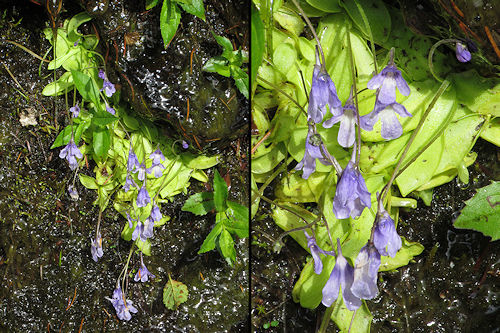365Caws is now in its 16th year of publication. If I am unable to post daily, I hope readers who love the natural world and fiberarts will seize those days to read the older material. Remember that this has been my journey as well, so you may find errors in my identifications of plants. I have tried to correct them as I discover them. Likewise, I have refined fiberarts techniques and have adjusted recipes, so search by tags to find the most current information. And thank you for following me!
Tuesday, July 19, 2022
Pinguicula
Day 279: There is a good reason that Pinguicula vulgaris (Butterwort) is relatively uncommon in western Washington: it prefers an alkaline habitat. There are only a select few places where it can find a suitable ecological niche because our Pacific Northwest environment is largely acidic, thanks to its heavy cover of evergreen trees. In this case, it's growing on a vertical rock face where fir needles are not likely to accumulate. Presumably its substrate rock is of alkaline composition, which in this case would exclude granodiorite, andesite or basalt. Butterwort is an insectivore which captures insects by means of a sticky secretion on its leaves. When an insect is trapped by the mucilaginous "glue," its struggles trigger the release of a digestive enzyme contained in specialized glands. Exoskeletal remains of insects can often be seen as black dots on the yellow-green foliage.
Labels:
Butterwort,
insectivorous plants,
MORA,
Pinguicula vulgaris
Subscribe to:
Post Comments (Atom)

No comments:
Post a Comment